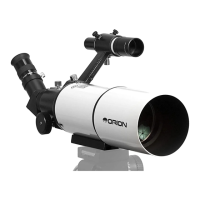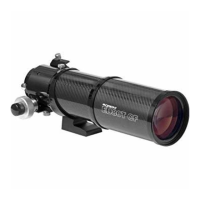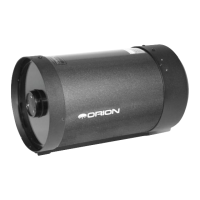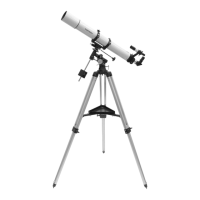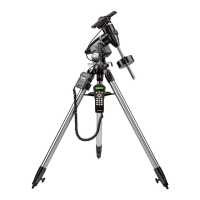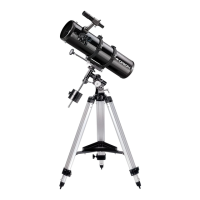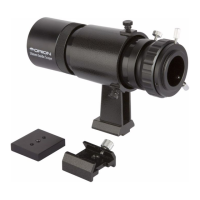10
For example, the FunScope, which has a focal length of 300mm, used in
combination with the 20mm eyepiece, yields a magnication of:
Whatever you choose to view, always start by inserting your lowest-power (longest
focal length) eyepiece to locate and center the object. Low magnication yields a
wide eld of view, which shows a larger area of sky in the eyepiece. This makes
nding and centering an object much easier. Trying to nd and center objects with
a high power (narrow eld of view) eyepiece is like trying to nd a needle in a hay-
stack! Once you’ve centered the object in the eyepiece, you can switch to a higher
magnication (shorter focal length) eyepiece, if you wish. This is recommended for
small and bright objects, like planets and double stars. The Moon also takes higher
magnications well.
The best rule of thumb with eyepiece selection is to start with a low power, wide-
eld eyepiece, and then work your way up in magnication. If the object looks bet-
ter, try an even higher magnication eyepiece. (You can purchase additional 1.25"
eyepieces, if desired.) If the object looks worse, then back off the magnication a
little by using a lower-power eyepiece.
Magnification Limits
Every telescope has a useful magnication limit of about 2x per millimeter of aper-
ture. This comes to 152x for the FunScope. Some telescope manufacturers will
use misleading claims of excess magnication, such as “See distant galaxies at
640X!” While such magnications are technically possible, the actual image at that
magnication would be an indistinct blur. Moderate magnications are what give
the best views. It is better to view a small, but bright and detailed image than a dim,
unclear, over-magnied image.
Using the 2x Barlow Lens
The included 2x power-boosting “Barlow” lens (see Figure 1) doubles the magnify-
ing power of any 1.25" eyepiece it is used with. For the FunScope, when you use
the 20mm eyepiece by itself you get a magnication of 15x. But when the 20mm
eyepiece is used in combination with the Barlow lens, the magnication is doubled
to 30x. And when the Barlow is used with the 6mm eyepiece, it yields a magnication
of 100x, instead of 50x without the Barlow.
Simply insert the Barlow lens into your telescope's focuser, and then insert the eye-
piece into the Barlow, gently securing it in place with the thumbscrew on the Barlow
lens (Figure 6). Then, adjust the telescope's focus wheels to enjoy double the mag-
nication of the eyepiece used.
300mm
20mm
= 15x
